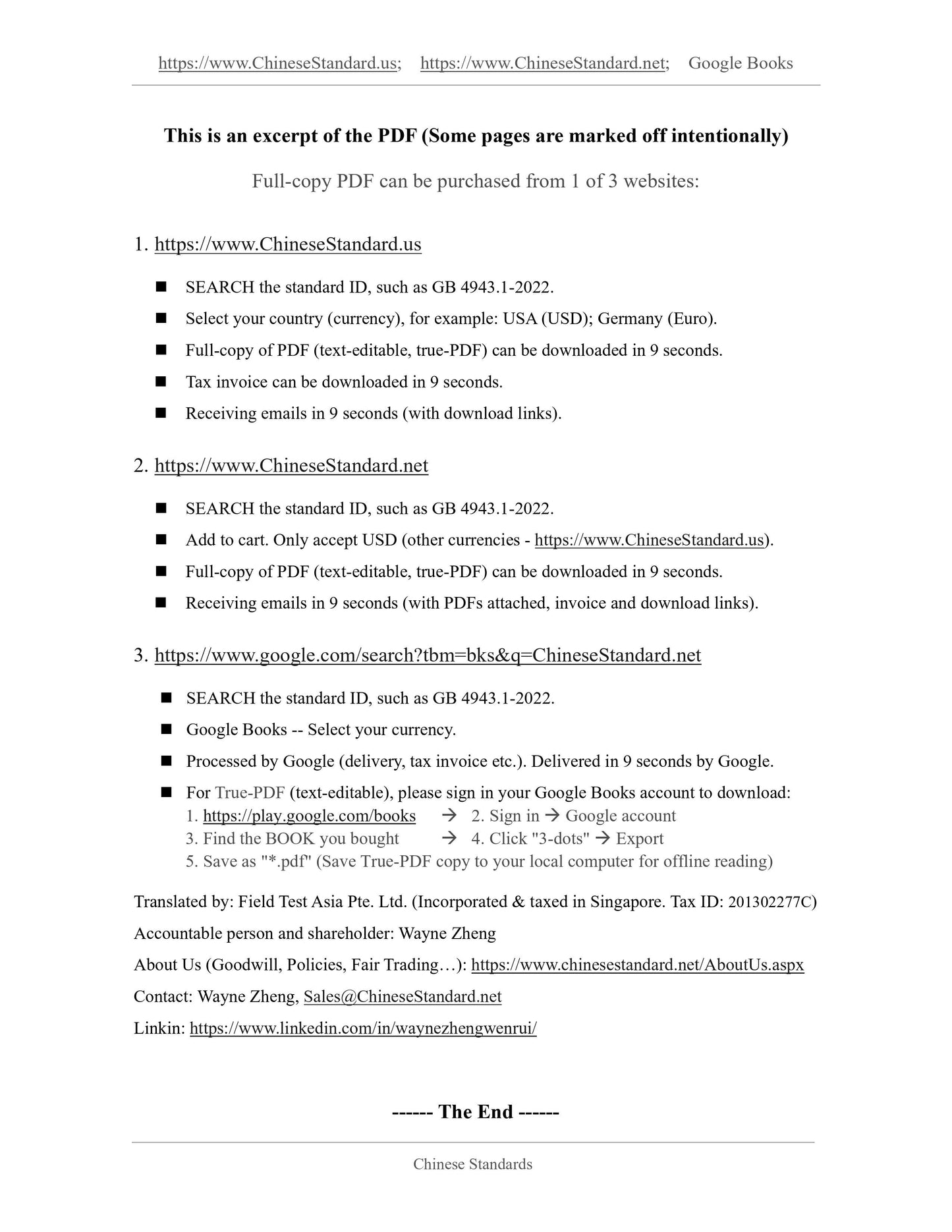1
/
of
11
www.ChineseStandard.us -- Field Test Asia Pte. Ltd.
TY/T 1001.1-2005 English PDF (TY/T1001.1-2005)
TY/T 1001.1-2005 English PDF (TY/T1001.1-2005)
Regular price
$460.00
Regular price
Sale price
$460.00
Unit price
/
per
Shipping calculated at checkout.
Couldn't load pickup availability
TY/T 1001.1-2005: Requirements and test methods for sport field equipments. Part 1: LED Screen
Delivery: 9 seconds. Download (and Email) true-PDF + Invoice.Get Quotation: Click TY/T 1001.1-2005 (Self-service in 1-minute)
Newer / historical versions: TY/T 1001.1-2005
Preview True-PDF
Scope
This part of TY/T1001 specifies the definition, classification, use requirements,inspection methods, qualification judgment rules for LED display screens for sports
fields.
This Part is applicable to LED display screens in track and field stadiums,
comprehensive gymnasiums, swimming pools, diving halls. Other sports fields can
refer to it for implementation.
This Part does not include display screens in timing and scoring systems and display
screens for guiding directions in sports fields.
Basic Data
| Standard ID | TY/T 1001.1-2005 (TY/T1001.1-2005) |
| Description (Translated English) | Requirements and test methods for sport field equipments. Part 1: LED Screen |
| Sector / Industry | Sports Industry Standard (Recommended) |
| Classification of Chinese Standard | Y56 |
| Classification of International Standard | 31.120 |
| Word Count Estimation | 13,139 |
| Date of Issue | 2005-07-20 |
| Date of Implementation | 2005-12-01 |
| Summary | This standard specifies: stadiums with LED display definition, classification, requirements, test methods and pass judgment rule. This standard applies to: track and field, gymnasium, swimming pool, diving hall -LED display. May refer to other stadiums. This standard does not include the timing and scoring system to guide the direction of the display and the venue the display. |
Share





















